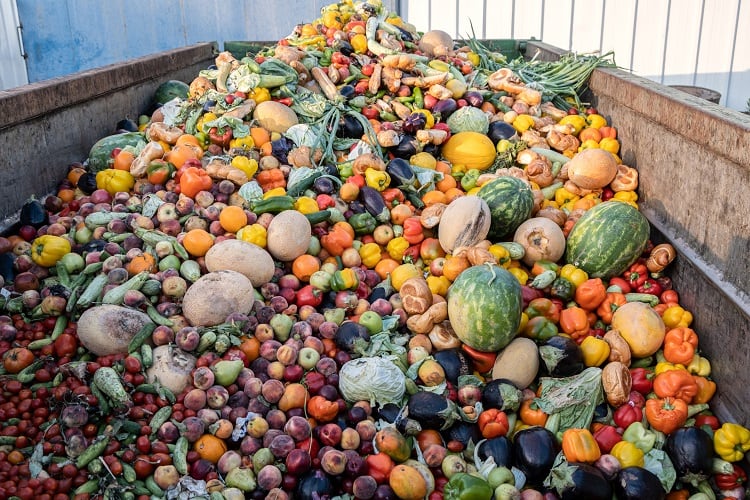Extreme weather events, which threaten crops and livestock, are becoming more prevalent across the globe as the changing climate alters weather patterns.
According to the European Environment Agency (EEA), Europe has experienced an increasing number of severe weather-related natural hazards, including droughts, forest fires, heatwaves, storms and heavy rain, over the past decade.
“These events are unfortunate reminders of the changing and volatile climate that Europe needs to adapt and prepare for, while taking action to drastically reduce carbon emissions in order to slow down and limit climate change,” says a spokesperson for the EEA.
“Before 1900 extreme weather events were fairly rare,” said Peter Wortsman, partner at European Food and Farming Partnerships (EFFP), while speaking at IFE 2024. “But at 1 degree of warming, which we’ve already passed, heatwaves are 2.8 times more frequent, extreme rain is 1.3 times more frequent and drought 1.7 times more frequent.”
These extreme weather events have resulted in a major threat to food security in number or ways.
What are the primary causes of climate change?
- Burning fossil fuels: The burning of fossil fuels, such as oil, gas, and coal, releases carbon dioxide into the earth’s atmosphere, causing the earth to heat up.
- Deforestation: Trees take in carbon dioxide for use in photosynthesis, so the cutting down of trees removes this vital process. Additionally, the carbon dioxide, which is stored within the trees is released back into the atmosphere if the wood is burned.
- Agriculture: Planting crops and rearing animals releases multiple different types of greenhouse gases, including methane from livestock and nitrous oxide from fertilisers, into the atmosphere.
How is extreme weather threatening food security?
“In England we’ve had the wettest 18 months since 1836,” explains Wortsman. “This really impacts the growing of crops because when it’s wet, it’s hard for the farmers to get onto the fields when they need to.”
Furthermore many farms have experienced devastating flooding which has resulted in crops being completely destroyed, and, as a result, the Agriculture and Horticulture Development Board (AHDB) is predicting that the production of the UK’s largest crop, wheat, will be down by 15%.
What is an extreme weather event?
An extreme weather event is the occurrence of weather, which is unusual for a particular place or time of year. It will include unusual characteristics in terms of magnitude, location, timing and extent.
This threat to crops is in addition to the pressures already faced by farmers across Europe and across the globe. In recent years, the EU has begun the implementation of several pieces of environmental legislation, including the European Deforestation Regulation (EUDR), as part of the EU’s Green Deal. These regulations, though essential for the environment, are placing a huge strain on farmers as they struggle to adjust.
In fact, just recently, the EU was forced to abandon a bill aimed at reducing pesticide use by half, following sustained protests from farmers.
“It’s not that farmers are against working in harmony with nature, they just need help making the transition,” says Wortsman. “At the moment, it feels to them that everything is being put on their shoulders.”
So how can we support farmers whilst also creating a more sustainable food system?

How can we create a more resilient food supply chain?
“Regenerative agriculture is a viable solution,” says Wortsman. “It focuses more on principles versus rules, and outcomes versus tasks, so that means it’s harder to define because it’s a spectrum rather than something that’s binary like ‘organic’.”
However, many farmers are concerned about the cost of implementation of regenerative agricultural practices and the potential drop in crop yields. But this investment will pay off over time.
What is regenerative agriculture?
Regenerative agriculture is an approach to farming which protects and rehabilitates the land and the environment. It focuses on soil regeneration, support and improvement of biodiversity, improvement of the water cycle, protecting ecosystems, and supporting biological carbon sequestration.
“The beauty of regenerative agriculture is that it involves reducing artificial inputs and improving the health of the land and working with nature, it results in higher profitability for farmers and a much more resilient land,” says Wortsman. “But the key challenge is managing that transition.”
In order to make the transition from conventional farming over to more regenerative farming, farmers will likely need to invest in specific machinery and equipment. They’ll also need to invest their time as they implement, and learn to adjust to, the new systems. This offers an opportunity for food manufacturers to support the farmers who supply them.
“They’re the most influential players in the supply chain as they buy the crop and they have the resources to invest,” says Wortsman.
And it’s a great opportunity for manufacturers to get ahead in the move towards creating sustainable supply chains, as Kellogg’s has shown. The cereal brand wanted to invest in a more sustainable supply chain, so worked with their farmers to implement a delivery plan. The system, which has now been running for ten years, focuses on a range or sustainability issues, including nitrogen use efficiency and the protection of yellowhammer bird populations.
“The farmers are really excited by it,” says Wortsman. But perhaps most important to manufacturers and retailers, “if you don’t invest in resiliency, your customers will go elsewhere,” as consumer awareness of climate change and the need for sustainable food production, grows.





